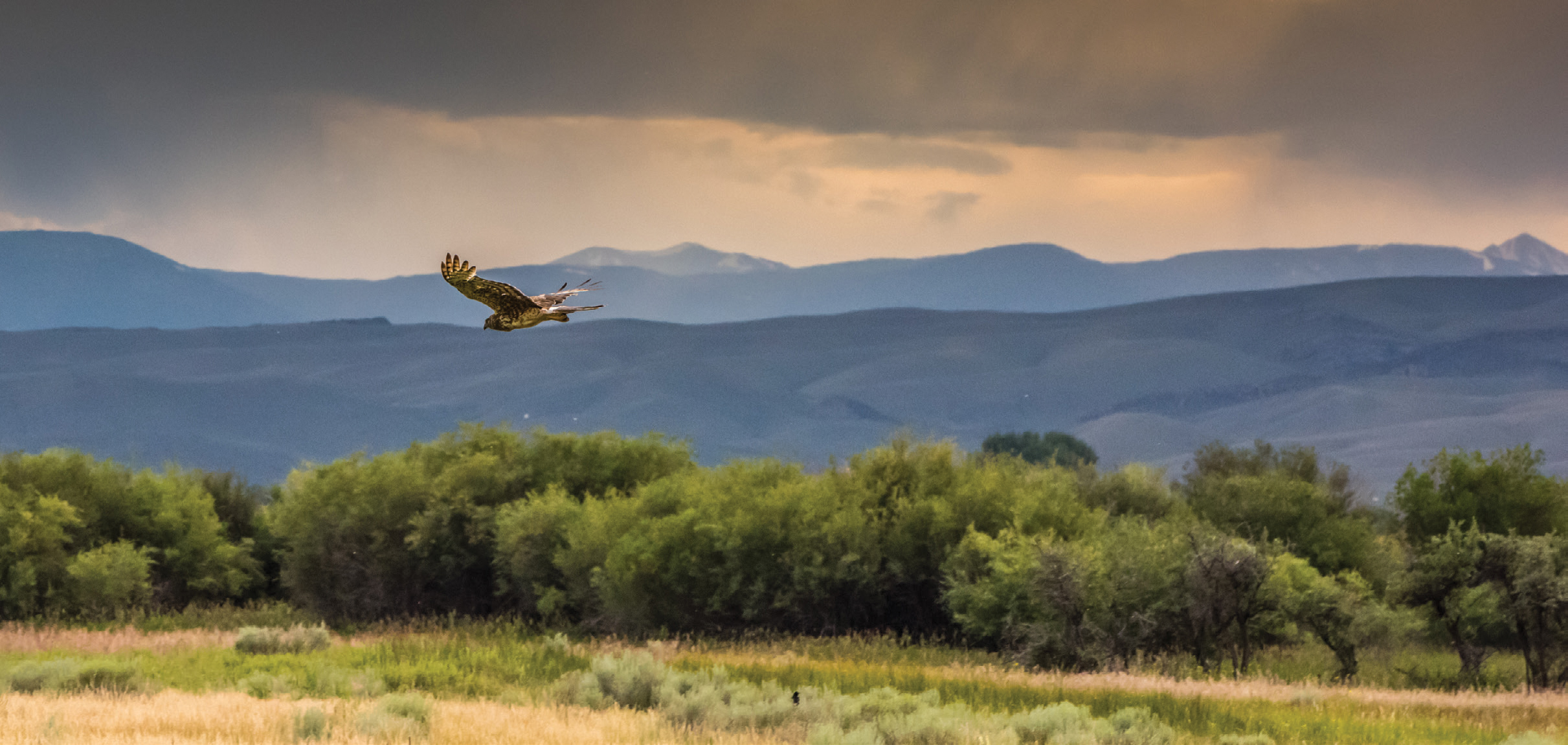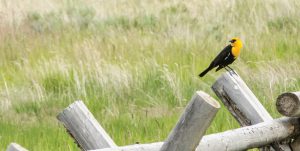
02 Jun Round Up: Bird Watching in the Northern Rockies
Bird watching, or birding as it’s commonly called, may not be for everyone. Some may consider it to be a hobby most often associated with the elderly. (My grandfather was a birder, binoculars hanging from his neck at all times!) But many of us who adventure here in the Northern Rockies could probably be considered accidental birders. When we stumble upon a sighting — a bald eagle soaring over a river we’re fishing, an osprey landing on its nest, a flash of red as a red-winged blackbird zooms by — we watch in awe.
Then there are those who are the real deal. According to a 2016 national survey of fishing, hunting, and wildlife-associated recreation by the U.S. Fish & Wildlife Service, more than 45 million people in the U.S. actively watch birds. Another study by the U.S. Forest Service found that approximately 80 million Americans, which is 35 percent of the adult population, viewed, identified, or photographed birds between 2005 and 2009.
Heather Bilden, community programs lead for the Montana Audubon, admits that she wasn’t a birder when she first started her avian-centric job, but she became hooked over time, finding that it offered her a new outlook on the natural world. Montana Audubon was founded in 1976 as an independent statewide conservation organization with a mission to “promote appreciation, knowledge, and conservation of Montana’s native birds, other wildlife, and natural ecosystems, and to safeguard biological diversity for current and future generations.” Here, Bilden explains why avian conservation is important, along with the appeal of birding and tips for newbies.

Heather Bilden is the community programs lead for the Montana Audubon.
BSJ: Tell us about your role with Montana Audubon.
Bilden: I have worked for Montana Audubon since 2008, when our education center opened in Billings in partnership with the Yellowstone River Parks Association. I’ve worn many hats during my tenure, but above all else, I enjoy sharing nature with students of all ages. I design and lead programs for families and adults that engage them in learning about the world around them — including everything from birds and other wildlife to plants and fungi.
BSJ: For you, what’s the allure of bird watching?
Bilden: I must admit that when I first began working for Montana Audubon, I wasn’t a birder. I loved learning about birds as much as I loved studying everything else in nature. Over the years, as I’ve become an honest-to-goodness birder, I’ve realized what a great portal they are to the natural world. Birds are everywhere, from pristine parks to our backyards. Every spring, when birdsongs fill the air again, I remember how much quieter and lonelier the winter months can feel without them. When they return and become more active, they easily capture people’s attention and imagination. With nothing more than a pair of binoculars in hand, an expansive world opens up to even the most casual observer.

BSJ: What tips can you offer novice birders?
Bilden: I lead monthly bird walks at the Audubon Center that are geared toward beginning birders, and I take a lot of time to help the participants learn how to observe birds. Good questions include: How big is it, especially compared to a known object? What is the shape of its body, tail, beak, and wings? What is it doing? What type of habitat is it in? What are the main colors and where are they? It can be helpful to talk to yourself or a partner while you observe the bird, and watch it for as long as possible, because they can disappear in the blink of an eye! Jot down everything you notice, and only then try looking up the identification. If you’re familiar with field guides and how they’re arranged, they can be a good reference. There are good birding apps that ask a few simple questions and then offer a list of possible birds. Spend time in the same park or yard for a few days, and you’ll get to know a handful of species that frequent the area. Once you have a few species in your pocket, so to speak, it becomes easier to identify them on the fly.
BSJ: What are some pressing issues right now in the Audubon world?
Bilden: One of my main concerns as an educator at the Audubon Center is the increasing amount of time people spend indoors engaged with electronics. Also, our society has become increasingly urbanized over the past 75 years, meaning that people no longer have as much daily direct contact with nature. Connection with the natural world is beneficial for our physical and mental health. When we’re outdoors, we’re physically active and our over-stimulated minds can rest and be restored. Engagement with nature is beneficial for the planet as well. We cannot care about and protect what we don’t know and understand.
BSJ: What can people do to help?
Bilden: Get outdoors! Find a spot to go for a walk. Even a walk in your neighborhood will give you a chance to marvel at the flowers that are in bloom, turn over some rocks to look for insects, and listen to the birds singing in the trees. Simply spending time outdoors without any electronics opens the door to realizing our vital connection with the earth.




No Comments